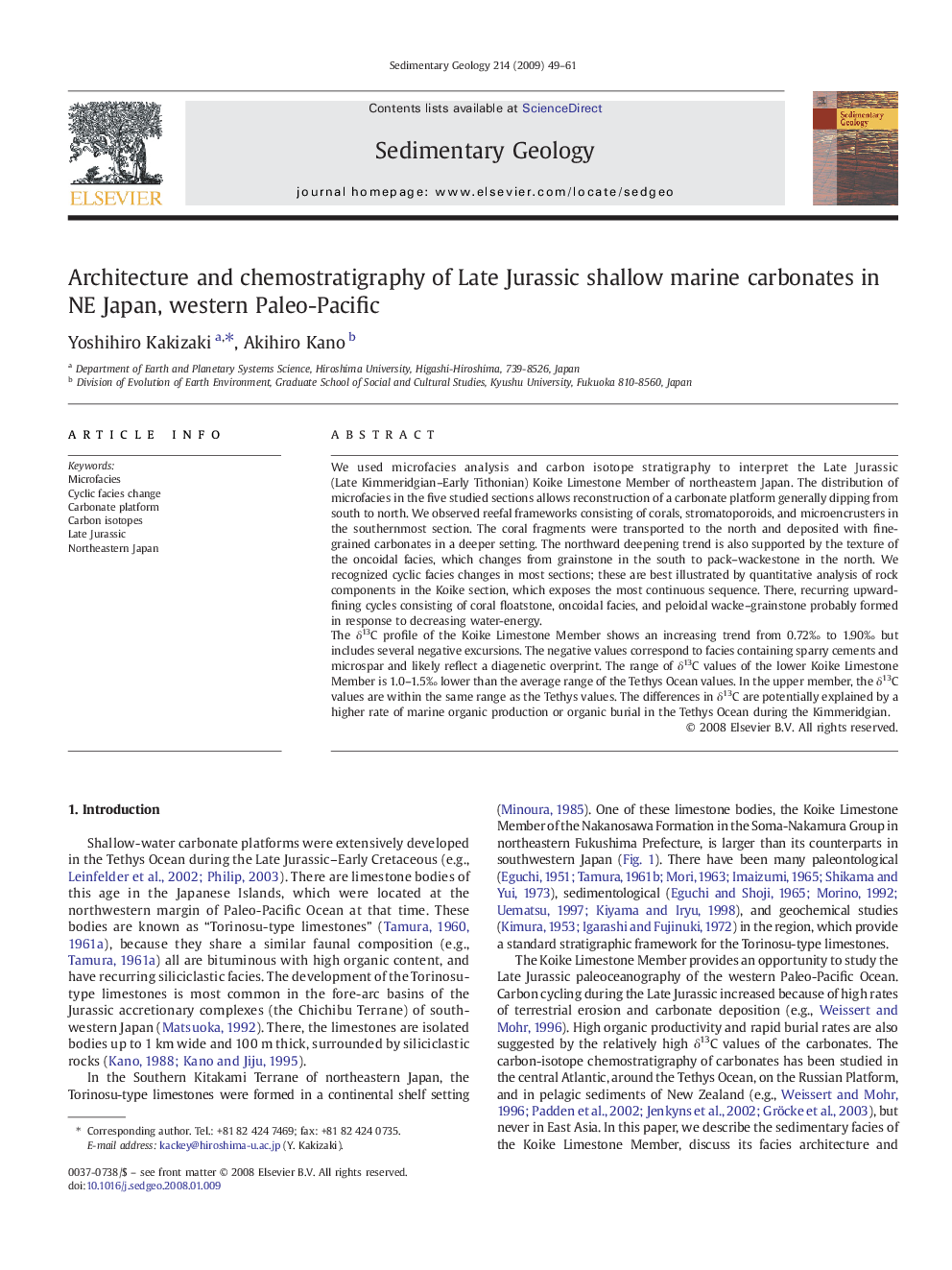| کد مقاله | کد نشریه | سال انتشار | مقاله انگلیسی | نسخه تمام متن |
|---|---|---|---|---|
| 4690456 | 1636143 | 2009 | 13 صفحه PDF | دانلود رایگان |

We used microfacies analysis and carbon isotope stratigraphy to interpret the Late Jurassic (Late Kimmeridgian–Early Tithonian) Koike Limestone Member of northeastern Japan. The distribution of microfacies in the five studied sections allows reconstruction of a carbonate platform generally dipping from south to north. We observed reefal frameworks consisting of corals, stromatoporoids, and microencrusters in the southernmost section. The coral fragments were transported to the north and deposited with fine-grained carbonates in a deeper setting. The northward deepening trend is also supported by the texture of the oncoidal facies, which changes from grainstone in the south to pack–wackestone in the north. We recognized cyclic facies changes in most sections; these are best illustrated by quantitative analysis of rock components in the Koike section, which exposes the most continuous sequence. There, recurring upward-fining cycles consisting of coral floatstone, oncoidal facies, and peloidal wacke–grainstone probably formed in response to decreasing water-energy.The δ13C profile of the Koike Limestone Member shows an increasing trend from 0.72‰ to 1.90‰ but includes several negative excursions. The negative values correspond to facies containing sparry cements and microspar and likely reflect a diagenetic overprint. The range of δ13C values of the lower Koike Limestone Member is 1.0–1.5‰ lower than the average range of the Tethys Ocean values. In the upper member, the δ13C values are within the same range as the Tethys values. The differences in δ13C are potentially explained by a higher rate of marine organic production or organic burial in the Tethys Ocean during the Kimmeridgian.
Journal: Sedimentary Geology - Volume 214, Issues 1–4, 15 February 2009, Pages 49–61